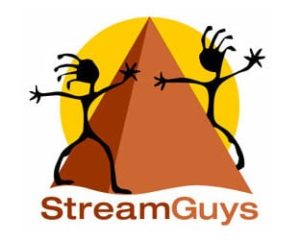By Allison Metcalfe
Special to RBR+TVBR
It’s no secret that the advertising landscape is ever-changing; however, the fundamental method by which television commercials are bought and sold hasn’t significantly changed since the first spot aired 70 years ago — but it’s changing now and changing fast.
As the industry evolves, the line between content and device is vanishing. With multiple viewing options, today’s consumers are hyper-connected and consume content on their terms whenever they want on the device of their choosing. This ownership over their viewing habits forces the marketing industry to transition from a world that was channel-focused to one that’s now people-focused.
As brands get savvier and are demanding more accountability, TV networks are feeling more pressure to monetize against their viewership data. As the status quo is being challenged, there is still opportunity for broadcast executives and networks to close the chasm as it relates to advertiser dollars and consumer attention.
Content is King
Broadcast executives and networks must know their viewers to near perfection in order to sign the taste and talent to drive audience loyalty. By leveraging the right data from advanced measurements, executives will know just what their audiences crave. While Netflix is deemed to have the “best original programming,” according to a recent Morgan Stanley survey, it is not ad supported, but execs still need to take notice. Programming remains key in audience attention, and if executives are going to convince people to watch shows (and the ads embedded), they better have strong programming to ensure people don’t tune out.
In order to keep up with the original content of streaming services, premium cable networks are working at record speeds to lock-in future programming talent before they ripen into Shondaland and [screenwriter and producer/director] Ryan Murphy level status—therefore being smart about signing or retaining talent for great content before it breaks the bank. Streaming services can’t sustain paying the big bucks for the top-performing producers. For instance, in 2008 Netflix paid $20 million for a contract with STARZ and received 2,500 shows and movies. Just this year, they shelled out $100 million for a single TV show, Friends, knowing that the show has one of the most loyal followings out there.
Advancing Measurement
As the spectrum of options to consume content broadens, TV must evolve its measurement capabilities beyond linear roots. TV has finally caught up with digital and that there is now a more effective way to buy, sell and measure television marketing efforts. New technologies such as machine learning, predictive algorithms and high-quality first-, second- and third-party data are influential in improving the precision of audience targeting and measurement to deliver relevant ads that drive both short and long-term business outcomes. The ability for networks to better measure reach across multiple consumer screens and deliver outcome-based decisioning to brands and agencies ultimately improving yields.
A common outcome that marketers want to measure is sales. Did the people who saw an ad for a company’s furniture inventory buy a couch six months later? In TV, this is now possible because more precise, people-based targeting is increasingly possible, which enables savvy marketers to match transaction data with viewership data in order to prove an action-based outcome.
With new measurement capabilities, meaningful conversations need to occur between all parties in order to improve relationships across the industry. Brands and agencies need to evaluate the value of TV viewers in orders for networks to provide secured guarantees that not only deliver reach, but also business outcomes.
The Future is Bright for Broadcast
While the trend toward cord-cutting is still going strong, brand marketers continue to invest heavily in linear TV and are ever savvier about measurement and the relation to dollars spent, and more specifically, how measurement drives ad value and therefore ad dollars. As mentioned above, brands want to see just how many sales their TV ad resulted in and advancement in measurement allows this to happen, therefore brands are more inclined to continue spending those ad dollars that networks and broadcast are seeking.
As media companies continue to see proven ROI in the streaming model, expect them to cash in on their own corner of the market by introducing proprietary streaming services themselves. Accordingly, armed with an understanding that ad dollars are fought for and won on content, they may double down on original programming—both past, present and future. Circling back to the Friends example above, streaming services will see the popular shows they’ve doled out hundreds of millions of dollars for, being taken back by the media companies as these new platforms are made available.
As the war between linear and streaming services wages on, the industry as a whole is moving forward and away from the traditional ways of buying and measuring TV based solely on reach. Whether creative genius takes form in content creation with top-performing producers or answering streaming service allure with branded platforms and ownership rights, networks are tapping into their creativity for survival. In the big (small screen) picture, the TV industry is navigating an increasingly complex environment where they will rely heavily on trusted data partners that can help them home in on what audiences’ desire.
Allison Metcalfe is the General Manager of the TV division at LiveRamp. She is responsible for driving the strategy around bringing people-based marketing capabilities to television. Prior to LiveRamp, she served as the Senior Director of Customer Success at Demandbase. This article was written exclusively for the Radio + Television Business Report.




